South West Victoria Brolga Research Project
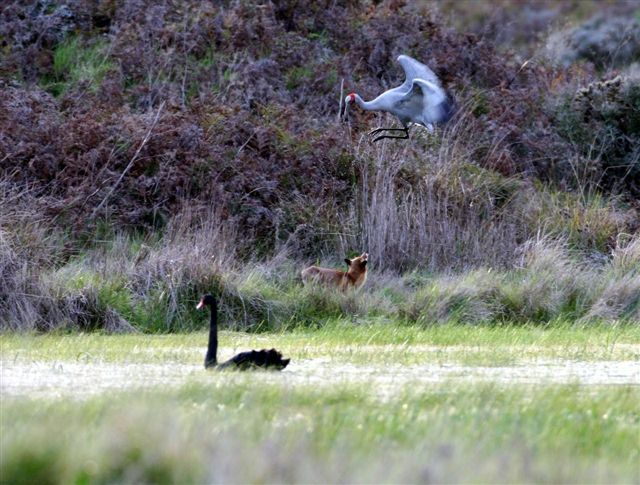 About the research project
About the research project- Why is this research needed?
- What does the project seek to achieve?
- What is the role of the Scientific Panel?
- How will the data be collected?
- Key findings
- Wind farm guidelines
- Project partners
- Further information
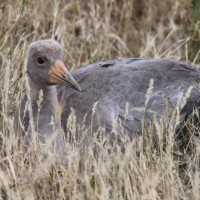 The wetlands of south-west Victoria are home to the stately Brolga, (Grus rubicunda). However loss and degradation of habitat and predation by foxes has over the last two decades seen a steep decline in the Victorian Brolga population, with nesting pairs now around 200-250. The wind energy industry has not contributed to its historic decline in numbers.
The wetlands of south-west Victoria are home to the stately Brolga, (Grus rubicunda). However loss and degradation of habitat and predation by foxes has over the last two decades seen a steep decline in the Victorian Brolga population, with nesting pairs now around 200-250. The wind energy industry has not contributed to its historic decline in numbers.
To avoid a further decrease in Brolga numbers, key representatives of the Victorian wind energy industry in south-west Victoria have come together to work with the Clean Energy Council, State and Commonwealth Government departments and the Bird Observation & Conservation Australia (BOCA) to conduct essential research on Brolgas in this region.
"It is essential that further information is gathered to both stabilise the decline and ensure the birds’ future in this area."
The Victorian Brolga Research Project will enable industry and the public to gain a better understanding of the Brolga and to measure or mitigate any potential impacts wind farm developments may have on the species.
This is a three year research project led by PhD candidate – Inka Veltheim who is based at Federation University Australia.
Ms Veltheim will draw on the expertise and knowledge of an independent scientific panel which has also been appointed to the project. The panel consists of relevant scientific experts drawn from government, the private sector and universities who specialise in Brolga biology, ecology and ecological modelling.
The project will for the first time fit satellite transmitters to a number of Brolgas to investigate their movements, spatial requirements, and vulnerability to collision with man-made structures.
The project is supported through funding from the Commonwealth Department of the Environment, Water, Heritage and the Arts, the Victorian Department of Sustainability and Environment, Sustainability Victoria and the wind energy industry.
With overwhelming scientific evidence indicating the reality of global warming, greenhouse gas abatement through utilising renewable energy, like wind power, has moved to the forefront of government and business agendas. As the nation responds to the urgency of climate change, investment into Australia’s abundant renewable energy resource is rapidly increasing.
The wind energy industry is poised to play a major role in meeting growing energy demand while reducing greenhouse gas emissions, with considerable focus being directed to south-west Victoria. South-west Victoria provides a world class wind resource and possesses many of the qualities necessary for commercially viable wind farms.
The south-west Victorian Brolga population lives across a range of wetland habitats where wind farms are currently being developed and is listed as ‘threatened’ under the Victorian Flora and Fauna Guarantee Act 1988.
Little is known about the life history, behaviour and habitat utilisation of the south-west Victorian Brolga population, which includes how the birds may interact or respond to wind turbines within their range. This lack of information makes it very difficult for Australia’s wind energy industry and regulators to make informed decisions when planning for wind farm developments in the region.
The wind energy industry is concerned about the welfare of the Brolga in this region and is therefore undertaking research to ensure there is no potential impact from wind farms on the development of the Brolga population.
A recent Department of Sustainability and Environment Action Statement available here documents the key reasons for the decline in Brolga numbers.
The primary objective is to develop a rigorous and scientific framework for understanding and assessing the potential impacts of the wind energy industry on the south-west Victorian Brolga population including the effectiveness of mitigation strategies. To achieve this, the following activities will be carried out:
- Melbourne University has developed and will administer a Population Viability Assessment (PVA) model for the project. The PVA is a systematic, quantitative population model that integrates all possible sources of information (e.g. results of studies and expert opinion) to predict the population consequences of theoretical impact, mitigation and offset/management scenarios. PVA is a widely accepted tool used for the assessment of risks to populations or species.
- The Project aims to progressively improve the quantitative estimates that make up the PVA model. To do this, the Project has funded a comprehensive research program to be conducted by a PhD student at the University of Ballarat. The research program will be field-based and investigate life history parameters, flight behaviours, foraging and nesting behaviour and habitat utilisation. Information acquired from the research program will be used at the discretion of the Scientific Panel to progressively refine the assumptions that make up the PVA, thereby increasing the value of the PVA.
- In addition, the valuable data being collected by individual proponents at the project-specific scale, both pre and post-construction will be collected to augment the information being collected by the research program, at the regional scale.
An independent Scientific Panel (Panel) has been appointed to the Project. The Scientific Panel will oversee the development of tools to predict, assess and mitigate the impacts of wind farm development on the species.
Specifically the Panel will be responsible for overseeing a standard set of scientific methodologies which will be used to assess and mitigate all Brolga-wind turbine interactions. The Panel will also be responsible for updating the methodology as new data becomes available.
The Panel will be chaired by the Department of Sustainability and Environment and will include relevant scientific experts in Brolga biology and ecology and ecological modelling from government, the private sector and universities.
The Scientific Panel will remain independent of the Project Steering Committee, but will be represented by its Chair, on the Steering Committee.
Confirmed participants of the Panel are:
- Dr Michael McCarthy, School of Botany, University of Melbourne
- Mr Ian Smales, Biosis Research
- Mr Mathew Herring, Murray Wildlife
- Mr Brett Lane, B Lane and Associates
- Mr Phillip Du Guesclin
- Ms Inka Veltheim, School of Science and Engineering, University of Ballarat
- Mr Richard Hill, Department of Sustainability and Environment
Some of the most important data will be collected through the capture and fitting of satellite transmitters to up to 25 Brolgas. These transmitters will provide information on the daily location and movements of the individual birds for up to two years.
Brolgas will be caught in nets at their summer flocking sites and the transmitter attached as a backpack, sitting between the wings of the bird. This is a standard method of measurement used by conservation movements around the world. The backpacks will not impact the birds’ natural movements. They will eventually biodegrade and fall off the Brolga.
Brolgas will also be fitted with a uniquely coloured and numbered leg band, so that they can be individually recognised. This will allow the collection of more detailed information on the movements of the marked birds and resightings after the satellite transmitters have ceased operation.
Key research findings 2015
Brolga counts 2015
Brolgas flock count in south-west Victoria 2015 - Information provided by Department of Environment, Land, Water and Planning, Barwon South West Region.
In late April this year, ecology student and PhD candidate with Federation University Inka Veltheim, and DELWP Senior Biodiversity Officer Richard Hill, visited key Brolga flocking sites in south west Victoria. The objective was to determine the proportion of juvenile and sub-adult birds within the flocks to provide an estimate of the amount of successful breeding that had occurred in the previous two years. This work has been undertaken annually since 2009.
Large flocks of Brolgas were found at regular sites at Strathdownie west of Casterton, north-east of Penshurst, south of Willaura, Darlington, and Lake Wongan while surveys in South Australia failed to detect any flocks.
A total of 449 birds were observed on the one day. The largest flock recorded was of 130 birds north of Penshurst. Of the 449 birds observed, ten percent were juveniles (birds born in spring 2014) or sub-adults (birds born in spring 2013).
In 2014, seven percent of flocks contained juveniles or sub-adults. The lowest estimate since the counts began was three percent in 2009, while in 2012 seventeen percent of flocks were sub-adults or juveniles.
These age structure counts are useful in gaining a better understanding of breeding success in the south-west Victorian population and are considered a better indicator of long term population trends than annual population size estimates.
From these results we are slowly building up a better picture of the population trend and status of our iconic Brolga population and the factors that influence breeding success. This will help in making better informed decisions for their conservation in the future.
Key research findings to January 2012
Identifying and tracking the birds
Chicks and adults are being colour-banded and fitted with satellite transmitters. Two colours identify the bird’s broader region (one of four regions) and specific area, and each bird has a specific letter/ number code. Satellite transmitters collect locations using GPS technology four times per day and send these data back to the researcher via satellite once a week.
Research progress to date
Prior to December 2009 an aerial survey to find brolga nest sites was undertaken. Since late November 2009, 22 brolgas have been fitted with transmitters. This includes 11 pre-fledged chicks, five adults and six juveniles. Fourteen transmitters are still providing data. Introducing these transmitters over a year and a half means data has been collected across age cohorts, seasons and years.
Key research findings to November 2011
Seasonal movements between non-breeding and breeding sites
Eight individual brolgas provided data on seasonal movements. These birds departed the non-breeding grounds of Willaura and Penshurst in late May to early July in 2010 and 2011. Seven of these moved approximately 100 km west and south west to an area near Casterton and Dartmoor. One individual also moved to this area, but flew back north east and settled near the Grampians.
Dispersal of chicks from breeding grounds
Leg band mounted transmitters were fitted on 11 pre-fledged brolga chicks between November 2010 and March 2011. All survived to fledging and dispersal. Nine of these have survived to date. Two individuals died shortly after leaving their breeding site.
Most of the chicks remained near their breeding grounds through the flocking period. The first fledglings began leaving their breeding area in March, with most fledglings leaving between June-August. Two individuals still remained near breeding sites in August.
Habitat use, home ranges and spatial requirements
Up to four GPS locations per day are being logged for each individual, providing detailed information about feeding and roosting habitats. Analysis of this data will begin in early 2012.
Survival of chicks, juveniles and adults
Nineteen pre-fledged chicks have been banded during the project, 11 of which have been fitted with transmitters. All these chicks survived to fledging and dispersal, indicating that chick survival can be high if breeding sites have water for the duration of the hatching to fledging period.
The data from birds fitted with transmitters indicate that adult and juvenile survival is also generally high.
Brolga counts
The Department of Sustainability and Environment has been coordinating counts of brolgas in southwest Victoria for the past three years to get a better understanding of how many brolgas there are in the southwest and how much successful breeding is happening.
Key brolga count findings to July 2010
- 401 Brolgas were found at five flocking sites in May, of which between nine and 16% of flocks were young birds less than one year old.
- This compares favourably with the previous year 2008 when only 3% of flocks were juveniles, and indicates that the breeding season of 2009 was a very good one. This was due to the good rainfall in southwest Victoria in winter and spring of 2009.
Key research 2009 & 2010
Since late November 2009, 22 brolgas have been fitted with transmitters. This includes 11 pre-fledged chicks, five adults and six juveniles. Nineteen of these have provided enough data for analysing movements and habitat use. Eight transmitters are still providing data.
The deployment of these transmitters over two and a half years has allowed the collection of data across age cohorts, seasons and years. These data are providing information on several aspects of brolga biology and ecology, including:
- seasonal movements between non-breeding and breeding sites
- dispersal of chicks from breeding grounds
- habitat use, home ranges and spatial requirements
- survival of chicks, juveniles and adults.
Data analysis is currently under way and the next 12 months will be spent writing a thesis and preparing manuscripts for publication.
Pre-fledged chicks colour-banded in 2009-2010
In 2009, eight brolga chicks in south-west Victoria were colour-banded. Sightings of these bands during the 2010, 2011 and 2012 flocking season confirmed that all eight chicks fledged and dispersed. Two of these were seen for the first time since banding in 2012, despite numerous visits to known flocking sites in 2010 and 2011.
In the second half of 2012, two individuals have paired up and one has attempted to breed at the Macarthur wind farm.
Birds fitted with PTTs in 2010 at flocking sites
During the flocking season in 2010 (April-June), three individuals were fitted with PTTs. This included one adult and juvenile at the Willaura flocking site and one juvenile at the Penshurst flocking site.
These PTTs have ceased operating and have provided approximately 10, 18 and 24 months worth of data. From flocking sites all three birds dispersed towards south west Victoria to the Casterton, Digby and Dartmoor area. The Willaura birds departed in late May to early July 2010 and the Penshurst bird departed in August 2010. All three returned to the flocking site they were captured at originally.
During the 2012 flocking season, two of the birds originally captured at Willaura were observed in flocks there. This indicates that birds return to areas they’ve previously used. The sighting of these birds also shows high survival in juveniles and adults over a number of seasons and seasonal movements.
Pre-fledged chicks fitted with PTTs in 2010-2011
During the 2010-2011 breeding season a total of 11 pre-fledged chicks were fitted with PTTs at breeding sites. Ten of these were captured in the Skipton and Streatham area and one was captured in the Casterton area.
Over the 2010-2012 period nine birds have been using an area, of approximately 35 km (east to west) by 95 km (north to south) in size, between the Western Hwy and Princes Highway. Most of the activity of the nine birds has concentrated between an area bounded north-south by Glenelg and Hamilton Highways and east-west by Lismore-Skipton Road and Mortlake-Ararat Road.
Known flocking sites used included the Blue/Pink/Salt Lake complex south of Carranballac and the Darlington area. Areas around Woorndoo were also intensively used by three birds carrying PTTs.
One of the birds fitted with PTTs in 2010-2011 near Skipton dispersed to the Willaura flocking site in November 2011 and spent two months there. It returned to an area near Carranballac in January 2012, close to where it had dispersed from in November 2011.
Another bird fitted with a PTT near Skipton dispersed from Nerrin Nerrin-Lake Bolac area to the Willaura flocking site in August 2012. This bird now appears to be heading south west and is currently between Penshurst and Hamilton.
The bird captured as a pre-fledged chick near Casterton has spent the last 21 months between Mt Gambier, South Australia and Casterton, Victoria.
Birds fitted with PTTs in 2011 at flocking sites
Two birds were captured at the Penshurst flocking site in 2011. This included one juvenile and one adult. The adult bird moved to the Willaura flocking site a few days after release. It dispersed from Willaura south west, 120 km from the flocking site and stayed between Strathdownie and Dartmoor until the PTT stopped transmitting regularly in October 2011. This individual was seen at the Willaura flocking site in early 2012.
The juvenile dispersed from the Penshurst flocking site south, towards Heywood, in June 2011. It continued north west and stayed between Mount Gambier and Casterton, moving between South Australia and Victoria. It began to move north east in December and spent the flocking season at the Willaura flocking site. It departed from Willaura towards south west in May 2012. It flew to the same areas between Mount Gambier and Casterton that it used in 2011.
Three birds were captured and fitted with PTTs at the Willaura flocking site in 2011. This included two adults and one juvenile. All these birds moved south west, following similar paths as all other birds captured at the Penshurst and Willaura flocking sites in 2010 and 2011. One adult bird returned north a day later and spent winter and spring near the Rocklands Reservoir, west of the Grampians. The PTTs ceased transmitting prior to the birds reaching flocking sites in 2012. However, all three birds were observed at the Willaura flocking
site in April 2012.
Habitat use, home ranges and spatial requirements
Birds fitted with transmitters have provided data on habitat use, home ranges and spatial requirements at breeding and non-breeding sites. Up to four GPS locations per day are being logged for each individual, providing detailed information about feeding and roosting habitats. Three birds fitted with PTTs in 2011 are providing more detailed information about day and night habitat use.
Survival of chicks, juveniles and adults
Nineteen pre-fledged chicks have been banded during the project, 11 of which have been fitted with transmitters. All these chicks survived to fledging and dispersal, indicating that chick survival can be high if breeding sites have water for the duration of the hatching to fledging period.
The data from birds fitted with transmitters indicate that adult and juvenile survival is also generally high. However, survival appears to be lowest in the juveniles, particularly during dispersal from breeding to non-breeding areas.
Data from colour banded pre-fledged chicks indicates that brolgas can pair up and breed when they are almost three years old. This also suggests that survival of chicks to fledging is important, as the chicks can become breeding adults and contribute to maintaining the population.
Analysis of data, thesis preparation and writing for publication
Preliminary analyses for the data have been undertaken and will continue for another two months. Concurrently, I will be undertaking detailed analyses and writing up results towards thesis submission and publications.
I will be presenting the results of the seasonal movements at the Wind and Wildlife Conference to be held in Melbourne on 6 October 2012.
Recommendations for continued data collection
The results from the study so far have shown that colour banding and fitting of transmitters on brolgas of different ages is highly valuable in determining movements at different life stages of brolgas (chicks, juveniles and adults) and during all parts of their annual cycle (breeding to non-breeding).
Chicks colour-banded in 2009-2010 indicate that brolgas can begin to breed at just under three years of age. Birds still carrying operational PTTs are almost two years old, and would therefore be expected to begin to breed from 2013 onwards.
Number of the birds with PTTs have utilised areas where wind farms are being proposed. For example, seven of the birds with PTTs that are still transmitting have used areas around the Dundonnel and Darlington area. One juvenile originally captured as a pre-fledged chick is showing dispersal towards southwest to similar areas as adults and juveniles captured at the Penshurst and Willaura flocking sites. This juvenile has also used habitats around the currently operating Oakland Hill wind farm near Glenthompson.
Use of transmitters
In December 2011 and January 2012 three more transmitters were fitted on birds at flocking grounds.
Further data on survival was collected in 2012 from the transmitters and observations at flocking sites.
In depth analysis of the data was carried out during 2012.
In April 2024, the Victorian Government released the Joint Ministers’ Statement – A better approach to managing biodiversity impacts of renewable energy projects, which outlines a risk-based approach to identifying, assessing and managing biodiversity impacts.
Following a public consultation process that concluded in February 2025, the Department of Energy, Environment and Climate Action (DEECA) has published guidance for addressing the impacts of renewable energy facilities on Victoria’s biodiversity.
The new Handbook for the development of renewable energy in Victoria, and specific guidance on assessing and managing impacts of onshore wind energy facilities on brolga and bats, is now in place.
The Brolga guidance, found at Appendix 2 of the Handbook, replaces the Interim Guidelines for the Assessment, Avoidance, Mitigation and Offsetting of Potential Wind Farm Impacts on the Victorian Brolga Population 2011, Revision 1 February 2012.
For further information please visit: Managing Impacts of Renewable Energy on the Environment
.
The South-West Victoria Brolga Research Project is a collaborative project supported by the following organisations:
|
 Victorian Department of Sustainability and Environment |
 Sustainability Victoria |
|
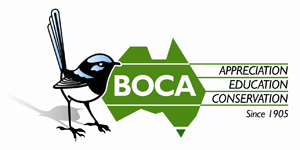 Birds Observation & Conservation Australia (BOCA) |
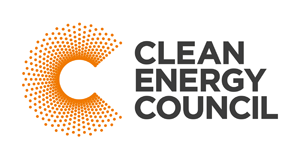 Clean Energy Council |
|
 Origin |
 Meridian Wind Macarthur |
|
 Union Fenosa Wind Australia |
 Pacific Hydro |
|
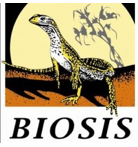 Biosis Research |
Representatives of each of these organisations sit on the project Steering Committee.
The project has been assisted with funding support from the Commonwealth Department of the Environment, Water, Heritage and the Arts.
How are the Project Participants involved in the project?
The involvement of each Project Participant is defined through a Memorandum of Understanding (MoU). Each participating organisation is represented on the Steering Committee.
The role of the Steering Committee is to provide oversight and support to the Project. The Committee meets at key milestone intervals throughout the term of the project (to 2011) to provide direction/guidance where appropriate and receive technical advice and input from the independent Scientific Panel and PhD student undertaking the Project. The Steering Committee is chaired by the Department of Sustainability and Environment.
As explicitly outlined and agreed to in the MoU between the Project participants, no aspect of any individual wind farm proposal will be discussed or assessed by the Steering Committee or the Scientific Panel. This task will be left to the statutory planning systems in place throughout Victoria, as outlined in the Planning and Environment Act 1987.
The Project Partners have agreed to work in collaboration to achieve to objectives of the Project.


.JPG)